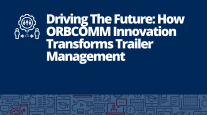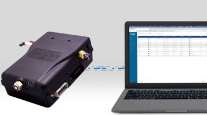Contributing Writer
Connected Trucks Go Mainstream
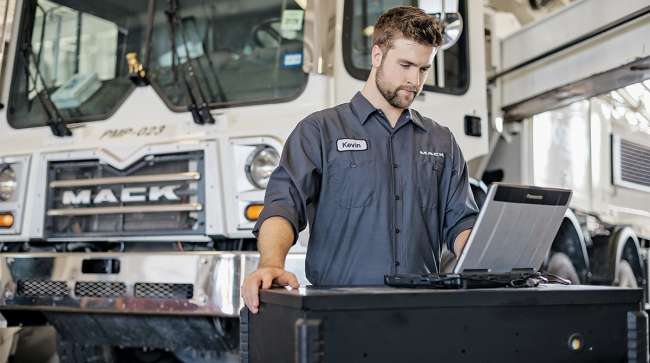
[Stay on top of transportation news: Get TTNews in your inbox.]
Connected truck capabilities such as remote diagnostics and over-the-air software updates are becoming more standard and more powerful as manufacturers continue to integrate them into their truck designs.
Equipped with modern telematics systems, trucks can telegraph crucial information to the fleet, the manufacturer and service providers. Instead of relying on a human poring over data, machine learning algorithms can help spot problems and trends. That information can lead to efficiency and uptime improvements such as maintenance interval adjustments. Systems can inform a fleet proactively that it should perform maintenance so it can schedule servicing with no unplanned downtime.
This type of data-driven asset management increasingly is becoming the norm, said Robert Braswell, executive director of American Trucking Associations’ Technology & Maintenance Council.
“I think the vehicles are going to get ever increasingly more complex, and the systems that help maintain them and analyze the data from their performance are going to need to be as complex,” he said.
Braswell said traditional “doctors of iron” technicians with a tactile understanding of equipment are being hybridized with “doctors of data” who understand information technology.
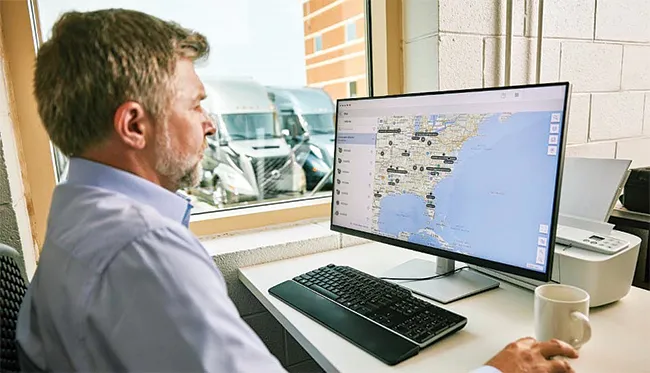
Manufacturers such as Volvo Trucks have expanded their connected vehicle services in recent years to help improve uptime and operational efficiency. (Volvo Trucks North America)
“The old-school way of going with your gut isn’t necessarily an adequate strategy given the complexity of the systems and logistics and so forth,” he said.
Volvo Trucks North America has offered a standard telematics service since 2012. With its new VNL model, the technology has been woven into the design, said Magnus Gustafson, vice president of connected services.
The company said its uptime service reduces average diagnostic times by 70% and repair times by 20%. The service can monitor each truck and classify a problem’s severity level as yellow if it can wait and red if it needs immediate attention, Gustafson said. Usually, the latter are emissions-system related. The truck can arrive at the dealership pre-diagnosed with parts already on hand. Before problems occur, parts can be replaced as they near their useful life’s end.
“It’s almost taking that unplanned stop and making it a planned, or at least a pseudo planned stop because you know what to expect when it arrives, versus sometimes a truck arrives at a yard and it parachutes in and nobody really knows what’s going on with it,” Gustafson said.

Penske utilizes connected vehicle data to identify when a truck needs service, as well as the urgency of those repairs, to optimize both maintenance and productivity. (Penske Truck Leasing)
Penske Truck Leasing can maximize productivity by ensuring it doesn’t bring in a truck for a repair that could have waited for the next preventive maintenance event, said Joe Mlachak, vice president of vehicle diagnostics. An artificial intelligence application predicts when repairs will be needed.
“It’s good to know, ‘Does this vehicle need service?’ That in and of itself is beneficial,” he said. “But knowing how long I have to get that service done — that is really critical.”
Predictive analytics technology has advanced significantly in recent years and will further improve as data becomes available and algorithms are refined, said Ashish Sadhu, director of connected vehicle solutions at Mack Trucks.
“As the Internet of Things grows, there will be more opportunities to collect real-time data from vehicles, warehousing and shipments,” he said. “This data can be used to create more accurate predictive models, improving decision-making in transportation and logistics.”
Sadhu said real-time demand forecasting, for example, could allow companies to adjust their inventories and transportation strategies based on shifting market conditions. Meanwhile, improved route optimization could enable businesses to alter delivery routes in response to changing traffic patterns and weather conditions.
Transtex CEO Mathieu Boivin discusses the environmental sustainability of auxiliary power units. Tune in above or by going to RoadSigns.ttnews.com.
But vehicle maintenance remains the core use case for truck makers’ factory-installed telematics hardware.
“Mack has started evaluating predictive analytics to enhance its vehicle maintenance program using advanced data insights and AI innovation, leading to safer, more reliable and more efficient vehicles,” he said.
Sadhu and Patrick Brown, Mack’s strategy director, said 5G wireless technology could be “a cornerstone of the future transportation ecosystem,” providing logistics companies immediate information and further empowering predictive analytics to anticipate maintenance needs.
Peterbilt Motors Co. has added features since launching its SmartLINQ connected vehicle service in 2015, said Jacob White, product marketing director. Parent company Paccar has implemented a prognostics field support approach aimed at identifying MX engine parts under warranty that might need replacement within 90 days.
“This includes leveraging manufacturing, repair, warranty and connected truck data along with machine learning to prevent avoidable downtime by proactively addressing components prior to them wearing out or failing,” White said.
Daimler Truck North America’s Virtual Technician program informs fleet operators when a vehicle fault occurs and how to fix it, said Anil Khanna, director of product development for DTNA’s Connectivity Services Group. Moreover, the information is stored in the Detroit Connect portal so fleet managers can keep a record of individual units and fleetwide faults. The portal provides trend analysis and other information such as the criticality of faults.
“We can report when safety events occur, provide a ton of supporting data, keep track of safety system health, and use existing hardware like the windshield camera to record events,” Khanna said.
This technology continues to advance, he said, through improvements such as the ability to transfer high-definition video.
“Larger software files, more data points from the truck, and nearly streaming, real-time data have already improved and will improve more in the future,” he said.
Kenworth Truck Co. offers its TruckTech+ telematics service on all 2017 and newer vehicles, said Cara Howes, assistant director of marketing.
In September, Kenworth is offering a new telematics control unit enabling future connectivity and integration with industry partners, as well as an enhanced cybersecurity gateway.
“Fleets should embrace change and be open to new ways of doing business. The way business has always been done isn’t the way it will be done in the future,” Howes said. “New tools are being developed every day that will change the way we interact with our vehicles, our dealers and our customers.”
Remote Software Updates
Like remote diagnostics, over-the-air parameter updates have improved transporters’ efficiency.
In the past, if a vehicle changed routes, the fleet would have to change settings manually after a time-consuming communications process between a manager and a shop. Now, new settings can be downloaded and then later installed as soon as the driver performs a key cycle, Penske’s Mlachak said.
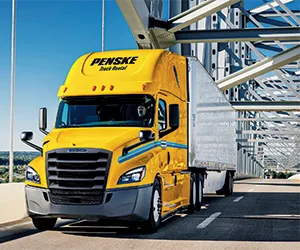
New settings can be downloaded and then later installed as soon as the driver performs a key cycle, Mlachak says. (Penske Truck Leasing)
Fleets can lower maximum vehicle speeds to save fuel or increase speeds when they encounter tight windows for hours-of-service compliance. They can monitor and reset safety settings as soon as they see they are out of compliance.
Volvo can monitor each truck while anonymizing the driver data, Gustafson said. Doing so demonstrates if a truck is operating as spec’d or if another spec would be optimal. Fleets might need to change vehicle speed limits based on the region or changing diesel prices. They can monitor which trucks are performing well and which aren’t.
Mack’s Sadhu and Brown said parameter updates can automatically adjust speed settings to comply with local speed regulations. That’s particularly beneficial when operating across U.S. and Canadian borders.
Fleets have the freedom to adjust these vehicle parameters in a way that best suits the unique needs of their operations.
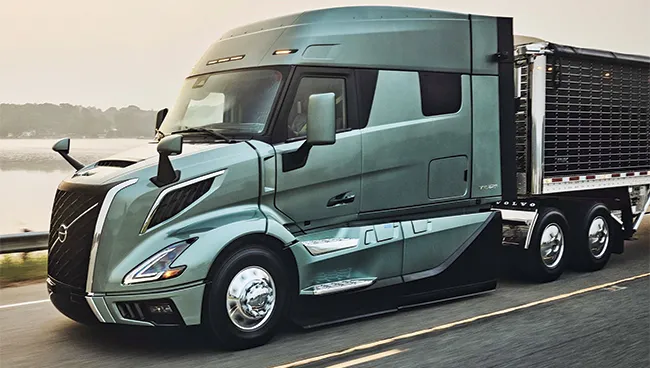
Volvo says its uptime service reduces average diagnostic times by 70% and repair times by 20%. (Volvo Trucks North America)
“What we have learned is that we have to provide our customers choice,” Volvo’s Gustafson said. “We have to be able to cater to the different customer needs. Just because you’re a grocery hauler doesn’t mean you do the same thing in Florida as you do even in Georgia or in California.”
Like parameter updates, vehicle software updates are being conducted over the air. No longer must trucks park while a technician does it manually.
“Those things are critical for the operation of a vehicle,” Penske’s Mlachak said. “It’s not like the OEs produce these software updates just for fun. They’re there to fix a bug. They’re there to improve the performance of the vehicle.”
TMC is working with manufacturers to help ensure they are meeting the trucking industry’s needs. Surveyed fleets have said they want a single, untethered telematics device, Braswell said. They are concerned about the right to repair and about patent-free, non-proprietary solutions, as well as forward-backward compatibility. They don’t want their systems to be obsolete in a few years.
Braswell said one increasingly important need is standardization in Vehicle Maintenance Reporting Standards coding. This would allow a commonality in data transmission and maintenance labor alerts, which occur before the vehicle is serviced. VMRS is a universal coding convention for parts, equipment and labor. Trucks now carry five computers and 2,000 fault codes, but having commonality on the 100-200 most critical ones would take care of most issues, Braswell said.
Want more news? Listen to today's daily briefing above or go here for more info
Security is a major concern as well. Manufacturers have an increasing interest in ensuring their systems are as robust and secure as possible. Sometimes that creates tension between truck manufacturers and fleet customers whose third-party service providers might not have access to the data, Braswell said.
Mlachak said Penske has helped truck manufacturers test their telematics systems in real-world environments to ensure they are useful and user friendly. Penske benefits by getting a head start in understanding the technology’s capabilities. It also allows Penske to help shape the technology’s development.
“As this technology is emerging, there’s a fine line between the leading edge and the bleeding edge,” Mlachak said. “And sometimes it helps to have a partner that kind of works through that bleeding edge of the technology.”



